Updated: 28-Jun-2021
Pratt & Whitney Canada began as a P&W US representative, carrying out overhauls and repairs of engines that were manufactured by the parent company. Later, around 1952 it built the R-1340, the well-known Wasp.
- With the times, the manufacture of piston engines declined and this was when P&W US decided to transfer the production of small turbine engines for general aviation to Montreal and Longueuil.
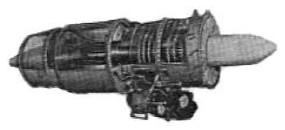
“PWC, JT12”
-The JT12 project was transferred from the USA to Canada. This engine was planned for the Tutor training aircraft of Canadair.
-The Tutor's design initially counted with installing the American J-83 and J-85 engines, but from another company.
-By 1957 the JT12 gave about 3,000 lbf of thrust.
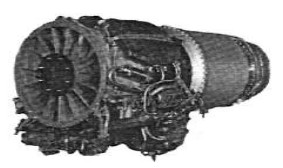
“PWC, JT12”
-In the USA the JT12 was militarily designated as J-60.
-The turboshaft version of this engine was the JTF12D, which we already saw in the previous Pratt & Whitney chapter.
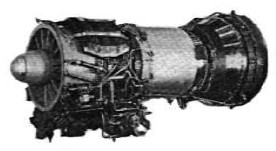
“JTF12D”
-The JT12 had been projected in Hartford, USA. The JTF12D (in some publications it appears as JFT12D and JFTD12) was the T-73 in the USA. It delivered 4,000 SHP.
-In 1959 the great success of PWC appeared: the PT6.

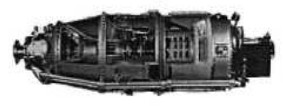
“PWC, PT6A, drawing and cutaway”
-It is a fully reverse flow engine. The air enters through the rear, passes to a mixed axial-centrifugal compressor, then to an annular reverse-flow chamber, passing the gases to the first turbine, the one for the gas generator impeller.
-Then to the power turbine and the gases come out through the front, usually by two ducts, one on each side and in the shape of a mustache.
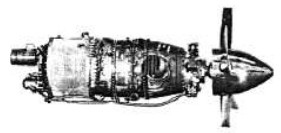
“PT6-A3”
-The front gearbox has the coupling for the propeller. Multiple regulators and governors control the engine running according to the pilot's request. Beta range is available on this engine.
-From the first models to today, more than 40 years have passed and the PT6 is still valid, after constantly evolving in countless models and powers available from 475 SHP to more than 1,300 SHP.


“PT6, on test bench”
-Due to its “free turbine” conception, it is easy to start, without having to drag the propeller in this process. The launch of the gas generator impeller can be done without problems with the on-board battery.
-The evolution, in so many years, goes from the first PT6A-3 and -6 to the PT6A-114 on the Cessna Caravan. Or of the last, the -135.
-The military designation is T-74. Except for the PT6A-45R version which is the T-101.
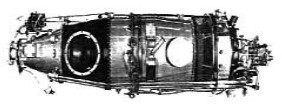
“PT6A-65A”
-In general they can be classified as light, those with the “dash number” as tens (-11, -15 ...), twenties (-25, -28 ...), thirties (-36, -38. ..). And the hundreds (-112, -114, -135).

“PT6, cutaway”
-The intermediate powers are given by the hyphen-number of the forties, that is, -41, -45, -45A, -45B, -41AG, -42, -45R, -40 and are introduced in the fifties with the -50.
-High powers belong to engines with dash-numbers of the sixties like -60, -65R, -65B, -65AR, -61A, -60A, etc.
-More or less this would be: Light powers, from 475 to 750 SHP. Average powers from 750 to almost 1,000 SHP. High power around 800 to over 1,300 SHP.
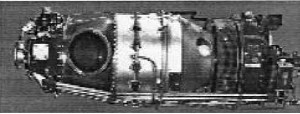
“PT6A-27”
-Being basically a turboprop, it has had versions for special aircraft, such as the PT6B-36 with 1,020 SHP.
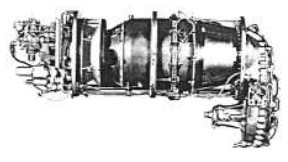
“PT6B-36”
-PT6s have been installed on more than 100 different airplanes and helicopters.
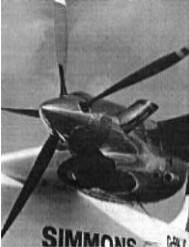
“Nice mounting of a PT6”
-It has also had multiple applications outside of aeronautics: motorsports, marine, railway traction, saw mills, etc.
-For higher powers, PWC's solution has been the twin mount, or Twin-Pac. It is the PT6T (military T-400).
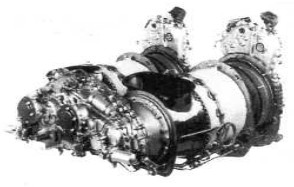
“PT6T-6, Twin-Pac”
-This engine is not intended for airplanes, but for helicopters. The power shaft rpm output is about 6,600 rpm. This engine delivers 1,875 SHP.
-The turboshaft version of the PT6 was the ST-6, but it is not used as a power plant but as an APP. One of whose versions has been installed on the Lockheed L-1011 Tristar.

“PWC, ST6”
-The PT7 was developed in 1980 and saves 15% of fuel compared to other turboprops. It delivers between 1,500 and 2,000 SHP, depending on the gearbox (ADS-604).
-The PT7A engine was the original PW100, the initiator of a new series of engines.
-Before continuing with these new engines we will include the ST9, much more developed than the PT6 and with a totally different approach. This engine gives 1,500 SHP of power, and incorporates several advanced design features. It was intended for various US Army VTOL / STOL aircraft, including helicopters.
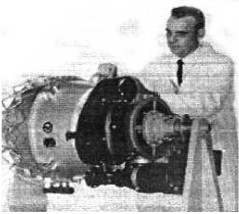
“PWC, ST9”
-It is also worth treating the other great success of Pratt & Whitney Canada, the JT15D.
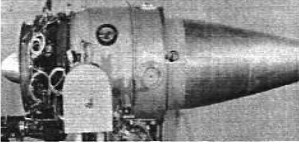
“PWC, JT15D”
-It is a double shaft turbofan. In its version -1 and -1A it was calibrated for 2,200 lbf.
-The fan blades, a total of 28, are made of solid titanium and are driven by a double turbine. This shaft rotates at almost 16,000 rpm at 100% power.
-The compressor impeller spins at almost 32,000 rpm. This is not entirely true, as it is a relative fact: the compressor impeller rotates on the fan shaft, the speed difference being another 16,000 rpm. They are 32,000 with respect to a fixed point of the engine.
-I would like to clarify that in the previous description no main bearing rotates at 32,000 but the compressor rotates at 16,000 on another shaft that already rotates at 16,000 rpm. This unloads stresses on said bearings.
-What would happen if the compressor rotated the other way around the Fan?, since we would find that the compressor would rotate at a relative speed of 48,000 rpm. (16 + 32 thousand), which would make the bearings suffer more, limiting their life.
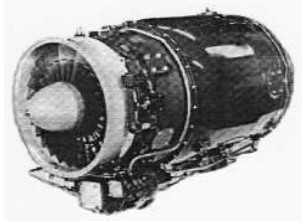
“PWC, JT15D-1”
-The gearbox for accessories is located at the bottom. At the base and at the front there is the "starter-generator".
-This device performs the functions of an electric starter, automatically switching to the generator function shortly before reaching idle gear.
-In the accessories section we can clearly see the bypass duct (in the cutaway illustration) or “by-pass” of the fan around the entire engine, discharging at the rear.
-There are later versions of this engine such as the -1A and -1B. As well as the -4, -4B, C D (Citation II), with 2,500 lbf of thrust and also the -5 and -5A, with 2,900 lbf of thrust.
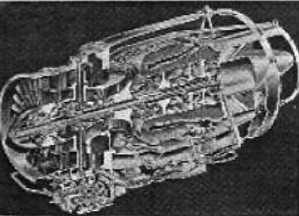
“JT15D cutaway”
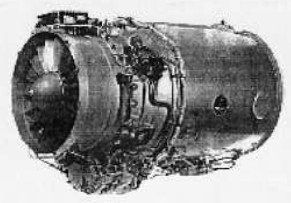
“JT15D-5”
-The architecture remains basically the same as the JT15D as we can see in the following illustration in a longitudinal cross-section.
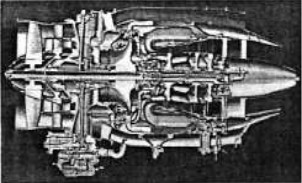
“JT15D-5”
-The fan drives a second smaller fan at the inlet of the compressor duct.
-Now we return to the previously announced PT7 and its derivatives, those of the PW100 series. It is a different line from those described so far.
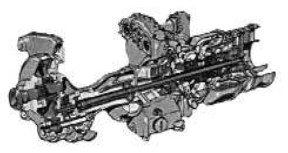
“PT7”
-As turboprops they have a forwarded gearbox with superimposed gears. At first glance, the diffuser ducts stand out. They leave the periphery of the compressor and enter the combustion chamber with the ducts in open air.
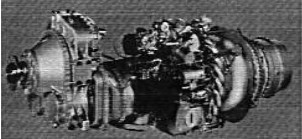
“PW-100”
-This engine would give rise to a new quite extensive series destined for regional air transport such as the 2,200 SHP PT7-2R engine that was to be installed on the Fokker F-27.
Eventually, PW100 series engines would be the ones installed on this famous plane.
-The PW115 was the first derivative of the PW100, with 1,500 SHP. It really gave this horsepower to the shaft but as an effective power it was 1,580 EHP.
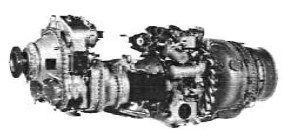
“PW115”
-The PW118 gave 1,800 SHP and 1,892 EHP. No data is known for PW119.
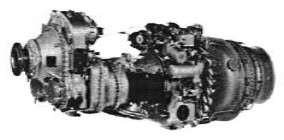
“PW120”
-The PW120 gives 1,700 SHP and 1,787 EHP. The PW120A increases the power of the PW118.
-We insist that the most characteristic, what most attracts the attention of these engines are the diffuser duct clusters.
-In fact, they are trumpets that after the compressor increase in section, to slow down the air that comes out at high speed, moderating it to enter the chamber and of course, reaching the maximum pressure of this air, clean and hot.
-The PW121 and PW123 follow. The latter is almost identical to the PW124 and PW124A.
-In these engines the power already exceeds 2,000 HP, that is, 2,400 SHP and 2,522 EHP. They have been mounted on the Fokker F-50 and Bae ATP.

“PW123”

“PW124”
-They have a double, single-sided, centrifugal compressor in cascade, one after the other.
-Subsequently, the PW125, PW126, PW127, PW130 and PW150 have been released.
-We also see them on the ATR-72 and -42, Jetstream 61 and Dash 8. As on some CL215 / 415.
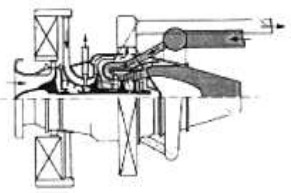
“Strato 2C-PW127”
-An atypical use of the PW127 is an experiment as a stationary gas generator, taking advantage of the “core” of this engine.
-It has an "intercooler" between the two centrifugal compressor stages and another air/air exchanger at the outlet of the preconditioned air from the chamber.
-The gas from the combustion is directed to the turbines through 12 branches. It is the Strato 2C project.
-And we see a real view in the below illustration.
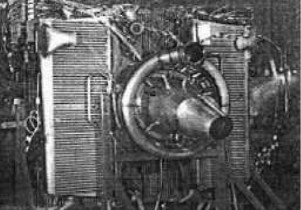
“Strato 2C project”
-The PW200 series are the next engines to deal with. They were planned to be used on helicopters as turboshafts. It belonged to a program called STEP, or “Small Turbine Engine Program”.
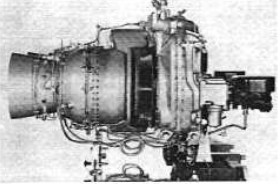
“PW200”
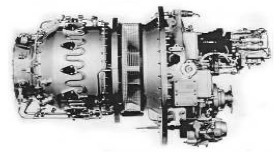
“Another PW200”
-These are small engines with front radial intake, centrifugal compressor, reverse flow combustion chamber and double turbine: one for the compressor and the other for the power output.
-The first PW200s were of comparable power to the PT6. For example, the little-known PW205 was rated at 523 SHP. The PW205B reached 625 SHP.
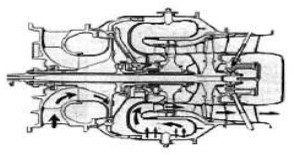
“PW200, schematic drawing”
-However, the best known has been the PW206A and B.
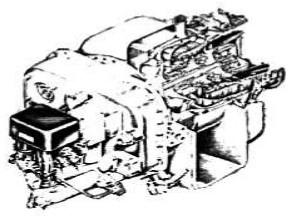
“PW205B”
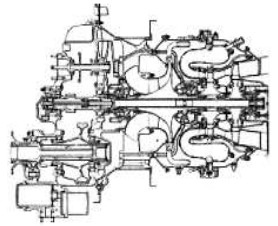
“PW206A”
-The PW206A could give 638 SHP for 2.5 minutes, 621 SHP for thirty minutes or at takeoff, and as a continuous maximum it delivered 550 SHP.
-The PW206B gave somewhat less power, 555 SHP for 2.5 minutes and 534 SHP for continuous maximum.
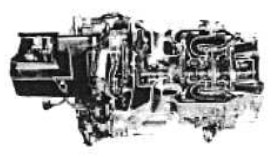
“PW207D”
-Of the PW207 version there is only one model, the D that gave 820 SHP.
-The PW209T reaches almost 1,000 SHP. It is a twin or Twin-Pac engine, with 970 SHP at takeoff, it can work with a single engine with 523 SHP and whose speed can be maintained for 2.5 minutes.
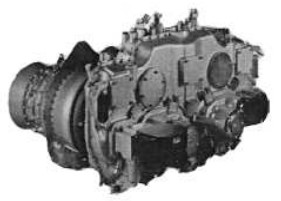
“PW209T”
-It is a motor that is very like the PT6T, if it were not for other qualities such as power recovery, etc.
-We now turn to the PW300., a new family for business jets. These engines were designed to go from coast to coast in the USA at an altitude of 47,000 feet and a speed of .75 Mach.
-Part of these engines are built by MTU in Germany. They are turbofans that began to be developed in 1984. The versions are 305, 306, 307 and 308.
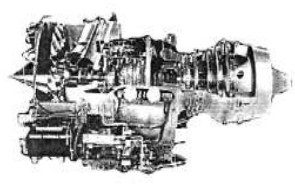
“PWC, PW300 cutaway”
-This is a cutaway of the PW300 showing its large fan driven by a three-stage turbine, both parts at each end of the engine.
-The gas generator with two turbines and one HP compressor are controlled by the accessories under the engine.
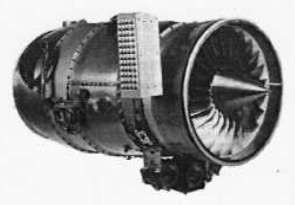
“First PW300”
-The PW300 first operated at its maximum rated thrust (4,750 lbf) in 1986.
-It was followed by the PW300/1 with the same thrust.
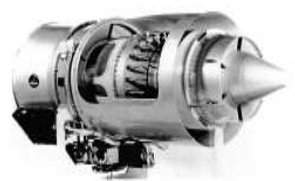

“PW300, at an exhibition”

“PW300/1”
-From there, the PW300/3 increased its performances, to 5,236 lbf at takeoff at sea level.
-Below we see the PW300-5 without fairing and fan.

“PW300/5”
-The PW305 that we see in a cutaway was certified in 1990, and its first destination was a BAe Hawker 1000 aircraft.
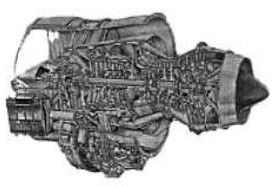
“PW305, cutaway”
-The PW305 gave 5,225 lbf of thrust. After passing through the Hawker 1000, this engine was converted into the PW305B with 5,266 lbf.
-The PW305A, gave slightly less power, 4,690 lbf. and it was intended for the Learjet 60.
-The PW306A was a grown version, with a bigger fan. It delivered 6,040 lbf of thrust, and was selected for the IAI Astra Galaxy and the Gulfstream 200.
-The PW306B already gave 6,050 lbf and was destined to the Fairchild-Dornier 328Jet.
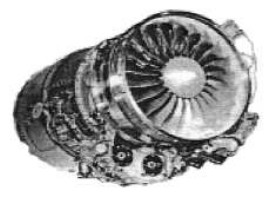
“PW306B”
-Another version of the PW306 was the C, which was chosen to power the Cessna Citation Sovereign with 5,922 lbf of thrust.
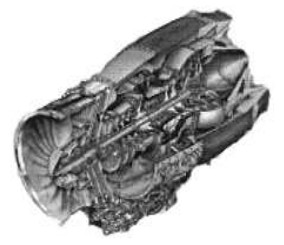
“PW306C cutaway”
-The evolution of this range of engines has continued with the PW307A that already appeared in 2001, and was planned for the Marcel Dassault Falcon 7x.
-This engine was built in consortium with other European manufacturers such as MHD, a joint-venture between Hurel-Hispano (Snecma) and Aermacchi, for the nacelles, and with MTU for the engine.
-The PW308A increased its power to 6,575 lbf with the forecast of reaching 6,900 lbf this same model.

“PW307A”
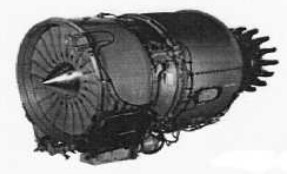
“PW308”
-The PW308B was selected for the F-Dornier 428Jet, and it reached 7,400 lbf of thrust.
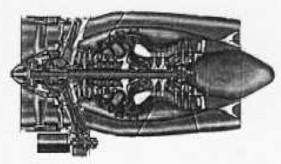
“PW308B”
-The PW308C has been assigned to the Falcon 2000EX with which it is capable of reaching flight level FL410 in 21 minutes.
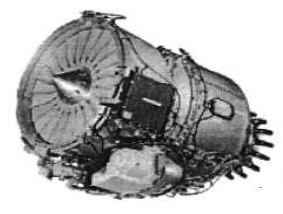
“PW308B”
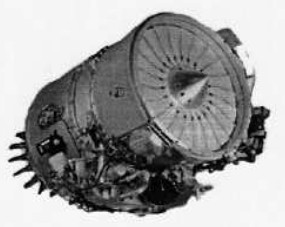
“PW308C”
-Continuing with the important engine production of Pratt & Whitney Canada, we come to the 400 series.
-They are not turbojets or turbofans, but turboprops.
-The PW400 returns to the general lines of the P&WC PT6 turboprop.
-Thereafter we return to turbofans with the PW500 series as it was born with the intention of filling a gap between the JT15D and the PW305.
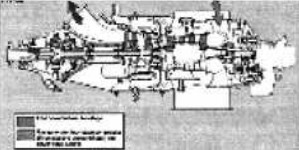
“PW400”
-Being conservatively designed, the PW500 was closer to the JT15D.
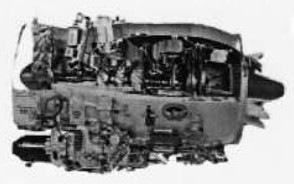
“PW530A”
-It had pressure ratios 16% higher than in the JT15D-4 and a by-pass ratio of 3.23 instead of 2.62 of the compared engine.
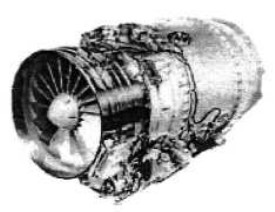
“PW530A”
-Fuel consumption is also 13% lower. (SFC = Specific Fuel Consumption). It planned for altitudes of 40,000 ft. and speeds of .80 Mach.
-The existence of the PW535A is known, although the engine that is being highly demanded is the PW545.
-But lately the PW535E has been chosen to power the Embraer LJ with 3,200 lbf of thrust. It uses the FADEC system.
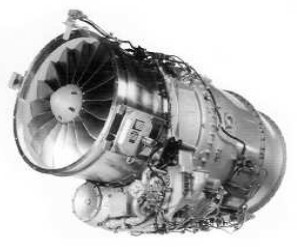
“PW535”
-The PW545 has been chosen by Cessna for the Citation Bravo and Excel.
-It gives about 4,000 lbf of thrust.
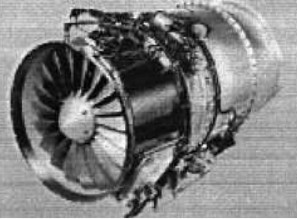
“PW545B”
-The PW600s were shown as model for the first time at the 1999 Paris Air Show.

“PW600 model”
-It is perhaps the range of smallest engines marketed by PWC. They were initially planned for 1,000 lbf with possible development up to 2,500/3,000 lbf.
-A very interesting facet of this engine is that it is offered in a turbofan version, for the powers mentioned and there are plans for a turboprop with powers from 600 to 900 SHP.
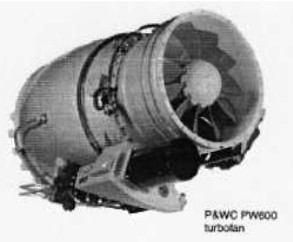
“PW600 turbofan”
-The PW610 has been chosen for the interesting and very small Eclipse 500 jet plane, in competition with the Williams FJ33.
-More specifically, the PW610F (F for turboFan) model has been chosen with 900 lbf of thrust. In one of the pictures below it is presented in cutaway.
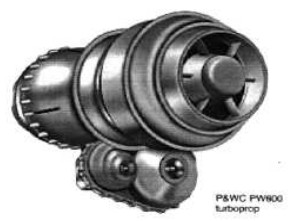
“PW600P, turboprop”

“PW610”
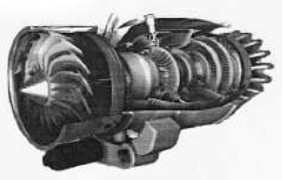
“PW610 with suppressor”

“PW610F, for the Eclipse 500”
-The PW615F is the one selected by Cessna for their new Mustang jet. It delivers 1,350 lbf of thrust.

“PW615F”
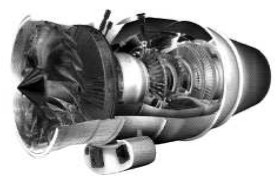
“PW625”
-The PW617F will be used by the Embraer VLJ. It is a derivative of the Canadian Pratt & Whitney PW625 program launched in August 2000 and produced a new family of engines (see PW600). It delivers a thrust of 1,615 lbf and is certified in 2007. It uses the FADEC system.
-Later, towards June 2001, PWC announced the PW625F, 2,500 lbf, also with the possibility of having a turboprop version.
-Engines that are different in their application, are the new PW800, with much higher power, from 10,000 to 20,000 lbf. They are produced with the collaboration of MTU and Fiat Avio.
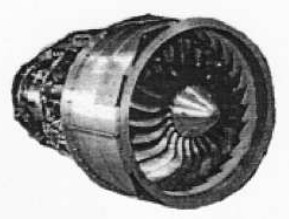
“PW800”
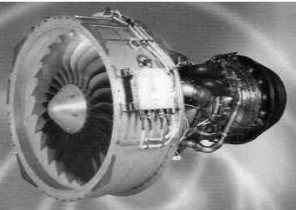
“PW800, seen from the other side”
-It has advanced-concept fan reduction. In the lower illustration we see the electronic control box on the outside of the fan housing.
-The PWC series 900 models refer to auxiliary power groups, such as the PW901A with a shaft power of 1,400 SHP and an output flow to condition passenger cabin of 550 lb/min. installed on Boeing aircraft such as the 747-400 and B-777.
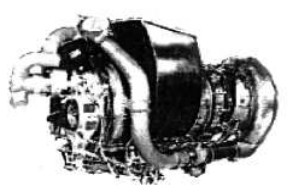
“PW901A”
-Of the collaborations with other brands, we highlight the one carried out with Snecma for the SPW-14 project, a solid machine in which the fan shaft looks more like that of a multi-bladed propeller fixed to a robust shaft that runs through the entire engine up to the three-stage LP turbine.
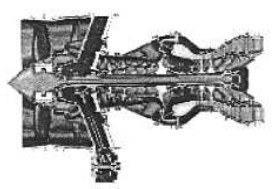
“PWC-Snecma, SPW-14”
-The gas generator group has a simple looking compressor, but mixed and a two-stage turbine. Frankly, only the combustion chambers look like a design from this era. It has a lot to do with the PW300/1.
-The PW designation for Canadian products alternates with what is often listed as PWC.
From Appendix 6: Their most important product has been the PT-6 for a long time.
-There was a project from Lear (from LearJet) that used the PT-6s in a push-propeller mount.

“The New Concept Lear”
-In fact it was a twin engine aircraft with the engines inside the fuselage and rather forwarded to maintain the correct gravity center. Having the propeller at the rear end, there were two fairly long transmissions and a gearbox.

"Original layout of the two PT-6s"
-It could fly with only one engine if the other failed. The author believes that it would rarely happen because in his professional life he has never seen a PT-6 fail, that is, it is difficult to prove as a sales argument.
-The PT-6 turboprop has the turboshaft version with the ST-6. It already appears in the main text for being used on helicopters.
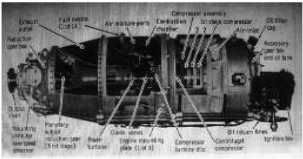
“ST-6B-62 turboshaft”
From Appendix 9: A new version of the PT-6 with power output through a reverse reverse box possibly used as a turboshaft. The model is investigated.

“Curious PT-6 type”
From Appendix 10: A new model appears to us this year, announced by a magazine. This engine, the PT-6 variant C-67E Last Generation, is processing -or will have finished processing- homologation by the European EASA.
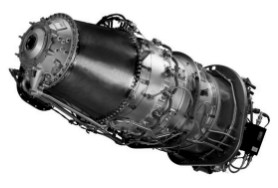
“New look for the PT-6”
-Another new model is the PT-50 turboshaft with only 50 HP and for use in UAVs, drones, etc.
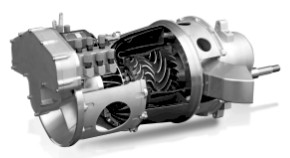
“PWC, PT-50”
-There is an application on an OAV-VTOL aircraft by the DARPA program. On the right we can see the PTO or power output (Power take off). The reduction is almost 20 to 1.
Engines of PRATT AND WHITNEY / CANADA
Model: JT-12D (T-73)
Arquitecture:
Compressor/s:
Combustion chambers:
Turbines:
Power / Thrust: / ---
Weight:
Model: JT-15D
Arquitecture:
Compressor/s:
Combustion chambers:
Turbines:
Power / Thrust: / ---
Weight:
Model: PT-50
Arquitecture:
Compressor/s:
Combustion chambers:
Turbines:
Power / Thrust: / ---
Weight:
Model: PT-6
Arquitecture:
Compressor/s:
Combustion chambers:
Turbines:
Power / Thrust:
Weight:
Model: PT-6T
Arquitecture:
Compressor/s:
Combustion chambers:
Turbines:
Power / Thrust: / ---
Weight:
Model: PT-7
Arquitecture:
Compressor/s:
Combustion chambers:
Turbines:
Power / Thrust: / ---
Weight:
Model: PW-100 series
Arquitecture:
Compressor/s:
Combustion chambers:
Turbines:
Power / Thrust: / ---
Weight:
Model: PW-115
Arquitecture:
Compressor/s:
Combustion chambers:
Turbines:
Power / Thrust: / ---
Weight:
Model: PW-118
Arquitecture:
Compressor/s:
Combustion chambers:
Turbines:
Power / Thrust: / ---
Weight:
Model: PW-119
Arquitecture:
Compressor/s:
Combustion chambers:
Turbines:
Power / Thrust: / ---
Weight:
Model: PW-120
Arquitecture:
Compressor/s:
Combustion chambers:
Turbines:
Power / Thrust: / ---
Weight:
Model: PW-121
Arquitecture:
Compressor/s:
Combustion chambers:
Turbines:
Power / Thrust: / ---
Weight:
Model: PW-123
Arquitecture:
Compressor/s:
Combustion chambers:
Turbines:
Power / Thrust: / ---
Weight:
Model: PW-124
Arquitecture:
Compressor/s:
Combustion chambers:
Turbines:
Power / Thrust: / ---
Weight:
Model: PW-125
Arquitecture:
Compressor/s:
Combustion chambers:
Turbines:
Power / Thrust: / ---
Weight:
Model: PW-126
Arquitecture:
Compressor/s:
Combustion chambers:
Turbines:
Power / Thrust: / ---
Weight:
Model: PW-127
Arquitecture:
Compressor/s:
Combustion chambers:
Turbines:
Power / Thrust: / ---
Weight:
Model: PW-130
Arquitecture:
Compressor/s:
Combustion chambers:
Turbines:
Power / Thrust: / ---
Weight:
Model: PW-150
Arquitecture:
Compressor/s:
Combustion chambers:
Turbines:
Power / Thrust: / ---
Weight:
Model: PW-200 series
Arquitecture:
Compressor/s:
Combustion chambers:
Turbines:
Power / Thrust: / ---
Weight:
Model: PW-205
Arquitecture:
Compressor/s:
Combustion chambers:
Turbines:
Power / Thrust: / ---
Weight:
Model: PW-206
Arquitecture:
Compressor/s:
Combustion chambers:
Turbines:
Power / Thrust: / ---
Weight:
Model: PW-207
Arquitecture:
Compressor/s:
Combustion chambers:
Turbines:
Power / Thrust: / ---
Weight:
Model: PW-209
Arquitecture:
Compressor/s:
Combustion chambers:
Turbines:
Power / Thrust: / ---
Weight:
Model: PW-300 series
Arquitecture:
Compressor/s:
Combustion chambers:
Turbines:
Power / Thrust: / ---
Weight:
Model: PW-305
Arquitecture:
Compressor/s:
Combustion chambers:
Turbines:
Power / Thrust: / ---
Weight:
Model: PW-306
Arquitecture:
Compressor/s:
Combustion chambers:
Turbines:
Power / Thrust: / ---
Weight:
Model: PW-307
Arquitecture:
Compressor/s:
Combustion chambers:
Turbines:
Power / Thrust: / ---
Weight:
Model: PW-308
Arquitecture:
Compressor/s:
Combustion chambers:
Turbines:
Power / Thrust: / ---
Weight:
Model: PW-400
Arquitecture:
Compressor/s:
Combustion chambers:
Turbines:
Power / Thrust: / ---
Weight:
Model: PW-500 series
Arquitecture:
Compressor/s:
Combustion chambers:
Turbines:
Power / Thrust: / ---
Weight:
Model: PW-530
Arquitecture:
Compressor/s:
Combustion chambers:
Turbines:
Power / Thrust: / ---
Weight:
Model: PW-535
Arquitecture:
Compressor/s:
Combustion chambers:
Turbines:
Power / Thrust: / ---
Weight:
Model: PW-545
Arquitecture:
Compressor/s:
Combustion chambers:
Turbines:
Power / Thrust: / ---
Weight:
Model: PW-600 series
Arquitecture:
Compressor/s:
Combustion chambers:
Turbines:
Power / Thrust:
Weight:
Model: PW-610
Arquitecture:
Compressor/s:
Combustion chambers:
Turbines:
Power / Thrust: / ---
Weight:
Model: PW-615
Arquitecture:
Compressor/s:
Combustion chambers:
Turbines:
Power / Thrust: / ---
Weight:
Model: PW-617
Arquitecture:
Compressor/s:
Combustion chambers:
Turbines:
Power / Thrust: / ---
Weight:
Model: PW-625
Arquitecture:
Compressor/s:
Combustion chambers:
Turbines:
Power / Thrust: / ---
Weight:
Model: PW-800 series
Arquitecture:
Compressor/s:
Combustion chambers:
Turbines:
Power / Thrust: / ---
Weight:
Model: PW-900 series
Arquitecture:
Compressor/s:
Combustion chambers:
Turbines:
Power / Thrust: / ---
Weight:
Model: PW-901
Arquitecture:
Compressor/s:
Combustion chambers:
Turbines:
Power / Thrust: / ---
Weight:
Model: SPW-14 (con Snecma)
Arquitecture:
Compressor/s:
Combustion chambers:
Turbines:
Power / Thrust: / ---
Weight:
Model: ST-6
Arquitecture:
Compressor/s:
Combustion chambers:
Turbines:
Power / Thrust: / ---
Weight:
Model: ST-9
Arquitecture:
Compressor/s:
Combustion chambers:
Turbines:
Power / Thrust: / ---
Weight:
Model: T-101
Arquitecture:
Compressor/s:
Combustion chambers:
Turbines:
Power / Thrust: / ---
Weight:
Model: T-400
Arquitecture:
Compressor/s:
Combustion chambers:
Turbines:
Power / Thrust: / ---
Weight:
Model: T-74
Arquitecture:
Compressor/s:
Combustion chambers:
Turbines:
Power / Thrust: / ---
Weight:


